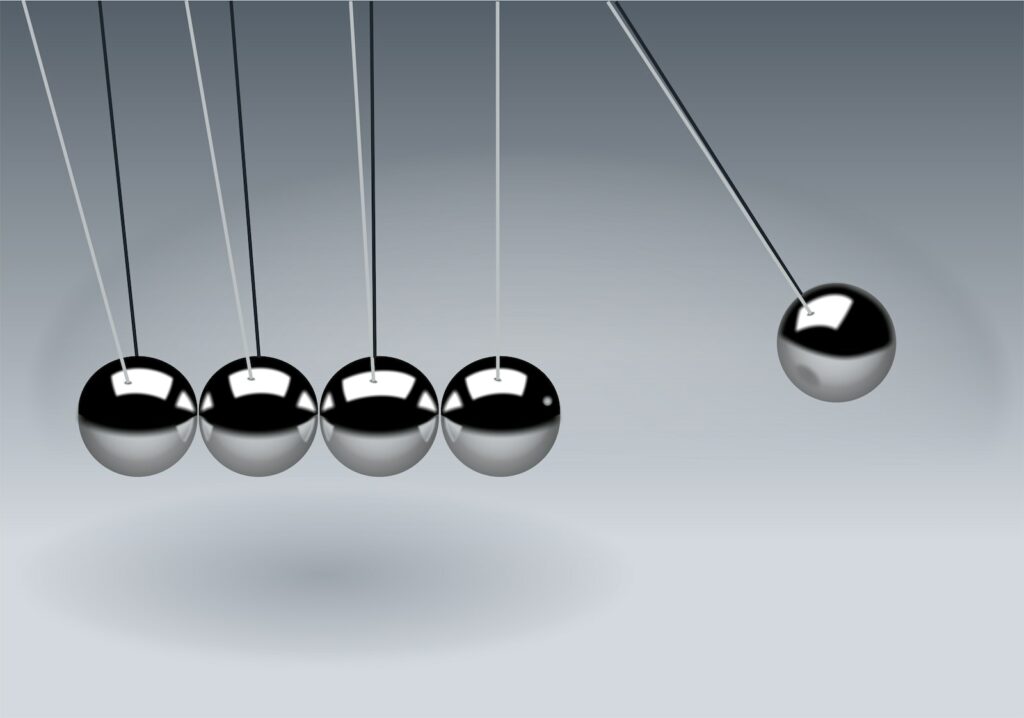Contents
- Introduction
- The history of motion graphics.
- The different types of motion graphics.
- How motion graphics are used today.
- The benefits of motion graphics.
- The disadvantages of motion graphics.
- How to create motion graphics.
- The software used to create motion graphics.
- The skills needed to create motion graphics.
- The different careers in motion graphics.
- The future of motion graphics.
- The advantages and disadvantages of 2D vs 3D motion graphics.
- How to use motion graphics in marketing and advertising.
- The benefits of using motion graphics in education.
- The potential uses of motion graphics in the future.
- The pros and cons of using motion graphics for web design.
- How to use motion graphics in product development.
- What are the challenges of motion graphics?
- The future of motion graphics technology.
- The different applications of motion graphics.
- Conclusion
Introduction
Motion graphics are animations and graphics that are designed to create the illusion of motion or action. They are often used in movies, television shows, video games, and commercials. Motion graphics can be 2D or 3D, and they can be created with a variety of different software programs. Many motion graphics artists have a background in graphic design or animation. In order to create compelling motion graphics, artists must have a strong understanding of timing, layout, and animation principles. When used effectively, motion graphics can help to tell a story or communicate a message in an engaging and visually arresting way.

The history of motion graphics.
The history of motion graphics is a fascinating one. For centuries, artists have been experimenting with ways to create the illusion of movement. In the early days of film and television, producers relied on traditional animation techniques to bring their vision to life. However, the advent of computer-generated imagery (CGI) has changed the landscape of motion graphics. Today, artists can create realistic, three-dimensional animations that are limited only to their imagination. Thanks to CGI, motion graphics have come a long way in a relatively short period of time. And as technology continues to evolve, the possibilities for future innovation are endless.
The different types of motion graphics.
Motion graphics is a versatile and powerful tool for conveying information. By combining text, shapes, and images with animation, they can grab attention and hold it for as long as needed to get the message across. Perhaps the most common type of motion graphic is the explainer video. These videos are designed to explain complex topics in a simple and engaging way. Often, they make use of metaphors and other visuals to break down the subject matter into manageable chunks. Another popular type of motion graphic is the infographic. These visuals are often used to convey data or statistics in an easy-to-understand way. By using animation, infographics can bring dull data to life and make it more interesting and engaging. Whether you’re looking to explain a complex topic or convey some data, motion graphics are a great option.

How motion graphics are used today.
Motion graphics are a form of digital animation that combines movements and graphics to create an engaging visual experience. Today, motion graphics are used in a wide range of applications, from advertising and marketing to product demonstrations and educational videos. When used effectively, motion graphics can grab attention, convey information, and even generate an emotional response. While the technology has come a long way in recent years, the basics of motion graphics remain the same: by carefully combining visuals and movement, you can create something that is truly captivating.
The benefits of motion graphics.
Motion graphics is a powerful communication tool that can be used to convey information in an engaging and visually appealing way. When used effectively, they can help to grab the attention of viewers and communicate complex ideas quickly and efficiently. Motion graphics can also be used to create a sense of atmosphere or mood, and they are often used in advertising and film to create an immersive experience for the viewer. In recent years, motion graphics have become increasingly popular as a means of delivering news and information, with many news outlets now using them to bring stories to life. With their ability to capture the imagination, it is clear that motion graphics are a versatile and effective way of communicating information.

The disadvantages of motion graphics.
While motion graphics can be visually stunning, they can also be a source of frustration for viewers. One of the biggest disadvantages of motion graphics is that they often rely on clichés and stereotypes. For example, many motion graphics depict women as caring and nurturing while men are shown as strong and independent. This can create unrealistic expectations and ultimately cause more harm than good. In addition, motion graphics can be repetitive and monotonous. Viewers often find themselves tuning out after a few seconds, which can lead to a loss of interest in the overall message. Finally, motion graphics can be costly to produce, and if they’re not done well, they can end up looking amateurish. When weighing the pros and cons of motion graphics, it’s important to keep all of these factors in mind.
How to create motion graphics.
Motion graphics is a visual communication tool that combines text, illustrations, and footage to create a moving image. This type of graphic is often used in advertising and marketing, as it can be an effective way to grab attention and communicate a message. To create motion graphics, designers typically start with a blank canvas or whiteboard. From there, they begin to sketch out their ideas, trying to capture the movement they want to achieve. Once they have a solid plan in place, they begin to add elements like text, images, and footage. As they work, they continually revise and adjust their designs until they are happy with the final product. The result is a dynamic and engaging piece of visual communication that can effectively convey a message or tell a story.
The software used to create motion graphics.
The software used to create motion graphics has come a long way in recent years. With the advent of powerful computers and advances in programming, it is now possible to create stunning visual effects that were once the domain of Hollywood studios. Today, there are a variety of software programs available that allow users to create professional-quality motion graphics. The most popular programs include After Effects, Cinema 4D, and Maya. Each of these programs has its own unique capabilities, but all of them allow users to create amazing results. With the right software, anyone can create stunning motion graphics that will impress and engage viewers.

The skills needed to create motion graphics.
To create motion graphics, designers need a combination of artistic and technical skills. creativity and imagination are essential for coming up with ideas for graphics that will capture viewers’ attention. However, simply having a good idea is not enough. designers also need to be able to translate their vision into a finished product that meets the specific requirements of the project. This often requires a strong understanding of graphic design principles, as well as animation software. motion graphics can be used for a wide range of applications, from creating titles and credits for films to developing interactive web content. As such, designers need to be adaptable and be able to create graphics that meet the specific needs of their clients. With the right mix of skills, anyone can create stunning motion graphics.
The different careers in motion graphics.
A career in motion graphics can be both creative and challenging. Motion graphic artists use their skills to create animations and visual effects for a variety of media, including television, movies, video games, and the Internet. While the field of motion graphics is relatively new, it offers a wide range of opportunities for those with the right skills and training. One of the most popular careers in motion graphics is that of a 2D animator. 2D animators use software to create two-dimensional images that can be used in a variety of settings. They may also work on three-dimensional models or characters. Another popular career in motion graphics is that of a 3D animator. 3D animators use software to create three-dimensional models or characters that can be used in a variety of settings. They may also work on two-dimensional images or animations. Finally, there is the career of a compositor. A compositor combines different images or video footage to create a final product. This can be done using a variety of techniques, including rotoscoping, matte painting, and digital effects. While each of these careers in motion graphics requires different skills and training, they all offer creative individuals the opportunity to use their talents to create amazing visual effects.
The future of motion graphics.
The future of motion graphics is looking extremely bright. With the advent of new technologies, there are more opportunities than ever before for designers to create visually stunning content. In particular, the rise of Augmented Reality (AR) and Virtual Reality (VR) is opening up a whole new world of possibilities. As AR and VR become more mainstream, we can expect to see a surge in the popularity of motion graphics. These immersive experiences will provide new ways for brands to tell their stories and engage with their audiences. We will also see a greater emphasis on interactivity and user experience. As motion graphics become more interactive, they will continue to evolve and become even more engaging and exciting. So, what does the future hold for motion graphics? It looks like it’s going to be pretty awesome.

The advantages and disadvantages of 2D vs 3D motion graphics.
When it comes to motion graphics, there are two main categories: 2D and 3D. each have its own advantages and disadvantages. 2D motion graphics are typically cheaper and easier to produce than 3D graphics, and they can be just as effective in conveying a message. However, they can also look less realistic and present some challenges when it comes to perspective and depth. 3D motion graphics offer a more realistic look, but they are often more expensive and time-consuming to produce. They can also be more difficult to view, as the viewer needs to have a certain level of depth perception to appreciate the full effect. Ultimately, the decision of whether to use 2D or 3D motion graphics depends on the specific needs of the project
How to use motion graphics in marketing and advertising.
Motion graphics is a powerful tool that can be used to capture the attention of your audience and deliver your message in a creative and engaging way. When used correctly, motion graphics can help to tell a story, convey complex information, and leave a lasting impression. There are a few things to keep in mind when using motion graphics in marketing and advertising. First, make sure that your visuals are high quality and relevant to your brand. Second, tell a story that will resonate with your audience. And finally, don’t be afraid to experiment – motion graphics can be used in a variety of ways, so don’t be afraid to think outside the box. With these tips in mind, you can use motion graphics to take your marketing and advertising efforts to the next level.
The benefits of using motion graphics in education.
In recent years, there has been an increasing trend toward the use of motion graphics in education. And it’s no wonder why: studies have shown that students who are exposed to motion graphics learn more effectively and retain information more efficiently. There are a number of reasons for this. First, motion graphics are highly engaging, providing a visual stimulus that can help to keep students’ attention focused. Second, they can be used to explain complex concepts in a clear and concise way. Third, they can be easily customized to meet the specific needs of each individual learner. Finally, motion graphics are simply fun to watch, which helps to create a positive learning environment. With all of these advantages, it’s easy to see why more and more educators are incorporating motion graphics into their teaching methods.

The potential uses of motion graphics in the future.
Motion graphics are a type of graphic design that uses animation and video to create visually striking designs. Though they have only been around for a few decades, they have already had a major impact on the world of advertising and marketing. As our world becomes increasingly digitized, it is likely that motion graphics will play an even bigger role in the years to come. For example, motion graphics can be used to create immersive, interactive experiences that engage viewers on multiple levels. They can also be used to create data visualizations that make complex information more digestible. As we enter the age of big data, motion graphics will become an increasingly valuable tool for communicators across industries. In short, the future looks bright for motion graphics. Thanks to their unique ability to tell stories and engage audiences, it is likely that they will continue to play a major role in our ever-evolving digital world
The pros and cons of using motion graphics for web design.
When it comes to web design, there are a variety of styles and approaches that can be used to create an effective and engaging user experience. One approach that has become increasingly popular in recent years is the use of motion graphics. Motion graphics can add a sense of depth and dimension to a website, and they can also be used to guide users through complex processes or information. However, there are also a few potential downsides to using motion graphics in web design. For one thing, they can be distracting or even overwhelming for some users. Additionally, they can increase the overall cost of designing and developing a website. As with any tool or approach, the decision of whether or not to use motion graphics should be based on the specific needs and goals of the project
How to use motion graphics in product development.
While the term “motion graphics” is often associated with video and film production, the truth is that this versatile tool can be used in a variety of ways, including product development. By bringing elements of design, typography, and animation together, motion graphics can help to communicate complex ideas in a visually compelling way. In the product development process, motion graphics can be used to create simulations and prototypes, test user interaction, and showcase features and functionality. Additionally, motion graphics can be used to create marketing materials such as demo videos and explainer videos. To ensure that your motion graphics are effective, it is important to work with a skilled designer who understands your specific goals and objective. When used correctly, motion graphics can be a powerful tool for taking your product from concept to reality.
What are the challenges of motion graphics?
Motion graphics are a unique challenge for designers. Unlike traditional graphic design, which is often static and linear, motion graphics require a deep understanding of timing, movement, and animation. In addition, designing for motion adds an additional layer of complexity, as the designer must take into account the varying speeds and directions of motion. As a result, motion graphics can be both challenging and rewarding for designers who are up to the task. With careful planning and execution, motion graphics can add an extra dimension of excitement and engagement to any project.
The future of motion graphics technology.
The future of motion graphics technology is looking very bright. With the advent of powerful new software and hardware, motion graphics artists will be able to create more realistic and complex animations than ever before. In addition, new rendering techniques will allow for smoother playback of animations, making it possible to create realistic simulations of physical phenomena. As motion graphics technology continues to evolve, the possibilities for its applications are virtually limitless. From medical simulations to virtual reality experiences, the potential uses for motion graphics are limited only by the imagination of those who create it. Exciting new developments in motion graphics technology are sure to revolutionize the way we interact with the world around us.

The different applications of motion graphics.
Motion graphics are a versatile medium that can be used for a wide range of purposes. They can be used to create engaging displays for digital signage, enhance the visuals of video production, or even add a touch of fun and excitement to a website or app. No matter what the application, motion graphics are an effective way to add visual interest and appeal. When used judiciously, they can help to grab attention and convey information in a concise and engaging manner. The key is to use them in a way that complements and enhances the overall design, rather than overwhelming it. With careful planning and execution, motion graphics can be a powerful tool for any project.
Conclusion
If you are looking for a creative and easy solution to make video content, then motion graphics is the right option for you. With its help, you can easily create explainer videos, product demo videos, or educational videos. The best part is that you don’t need any special skills or knowledge to create motion graphics videos – all you need is a good story and some imagination. And if you need any help with that, Vidbravo’s video maker is always here to assist. Give it a try today and see how easy and fun making motion graphic videos can be!